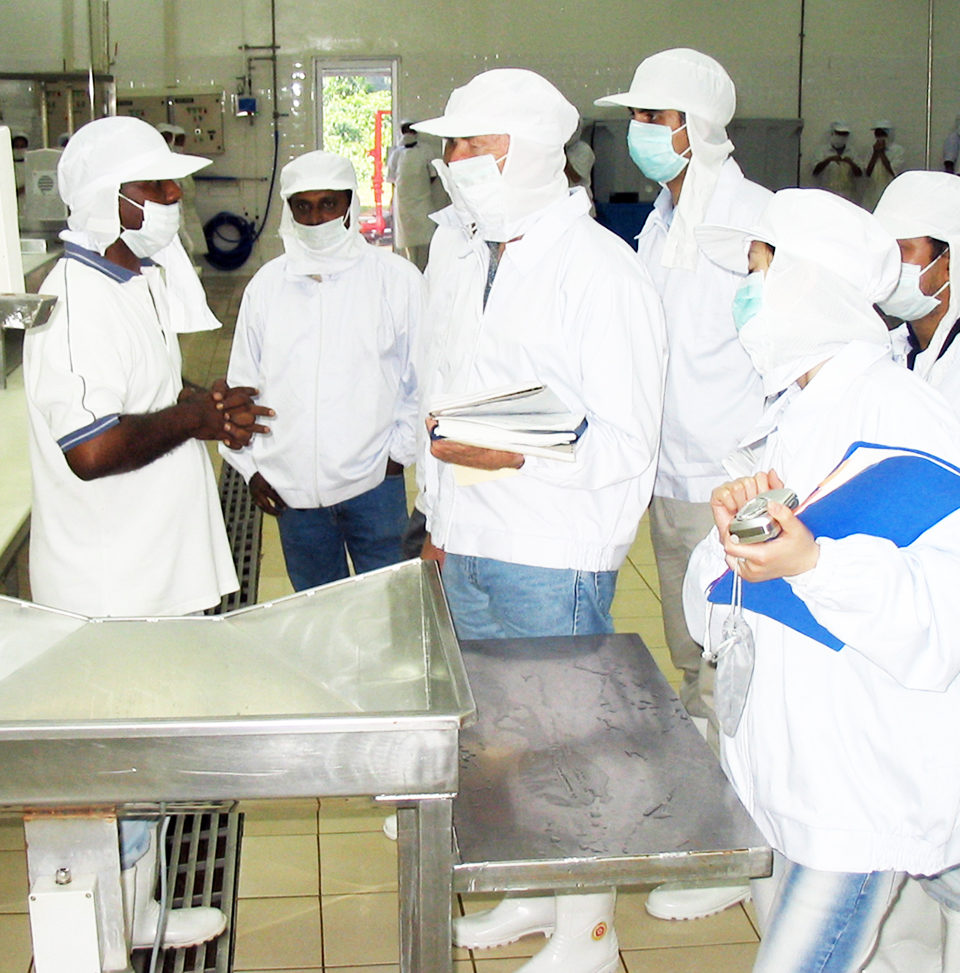Eliminating ‘audit fatigue’ and other efficiencies will benefit all stakeholders

Feed manufacturing is an important link in the production chain of aquaculture species. As the safe feed-safe food concept is pursued to minimize food safety risks to animals and people, other aspects such as the environment, biodiversity and worker health and safety are also taken into account to aid in the sustainability of the industry as a whole.
Private feed certification standards have been developed as a market response to bring trust and demonstrate responsible industry practices among stakeholders. There are currently more than five feed certification schemes, but only the Global Aquaculture Alliance Best Aquaculture Practices (BAP) feed mill standards and GlobalGAP Compound Feed Manufacturing (CFM) Standard include specific criteria to address important food safety, environmental and social issues and are of worldwide applicability. A third feed scheme for aquaculture feed producers being developed by the Aquaculture Stewardship Council (ASC) is projected to be available by December 2015.
Leading programs
The BAP feed mill standards are solely intended for aquaculture feed production and have sections with control points addressing property rights and regulatory compliance, community relations, worker safety and employee relations, fishmeal and fish oil conservation, storage and disposal of supplies, waste management, HACCP process control, good manufacturing practices and traceability.
The GlobalGAP CFM Standard’s scope is solely intended for mammalian/avian livestock and aquaculture feed production. It has sections with control points addressing official approvals; worker health, safety and welfare; quality management – HACCP; internal audits; feed ingredient management; storage facilities; processing; finished feed transport; site hygiene and management; quality control of finished feed; ingredients declaration; complaints; traceability; animal protein and responsible use of natural resources.
The ASC feed standard will be intended solely for aquaculture feed production, targeting production that will be environmentally sound and socially responsible. What control points will be included to achieve these objectives remains to be seen.
Cooperative agreement
Representatives of the three above-mentioned programs signed a memorandum of understanding in April during the European Seafood Exhibition in Brussels with the goal of working together to achieve efficiencies that will benefit all stakeholders. This is really a laudable act that has as one of its first objectives to work on the harmonization of the feed standards.
Hopefully, this effort will translate to tangible efficiencies that reduce “audit fatigue” and costs associated with multiple certifications. It may also avoid yet another costly accreditation process for the ASC feed standard to certification bodies that are already accredited by International Accreditation Forum members and Multilateral Recognition Arrangements signatories.
A quick look at the sections content of the BAP and GlobalGAP feed standards suggests that harmonization of many of the control points is an achievable goal and could be a first collaborative step to take. Recognition of the harmonized standards by each standard’s owner and market participants would then be desirable.
As each of the standard-setting organizations would want to maintain the unique differences of their programs, only the control points not harmonized – or riders for specific standards – would need to be additionally audited for feed mills wishing to be certified under more than one of the standards, thus streamlining the audit process and reducing costs and resources for all.
Perspectives
What this initial collaborative effort’s final outcome will be remains to be seen. However, the industry is grateful for it and looking forward to reliable, efficient and effective certification systems. Ultimately, these advances will help bring trust and transparency among all market participants, regardless of size, and support further development of the industry to provide an excellent supply of protein to an increasing human population.
(Editor’s Note: This article was originally published in the November/December 2013 print edition of the Global Aquaculture Advocate.
Authors
-
Mario Velasco-Escudero, Ph.D.
Quality Certification Services
P. O. Box 12311
Gainesville, Florida USA 32609-8535 -
Ramkrishnan Balasubramanian, Ph.D., MBA
Quality Certification Services
P. O. Box 12311
Gainesville, Florida USA 32609-8535
Tagged With
Related Posts

Responsibility
Aquaculture certification steers to zone management
Zone management is an emerging field of interest among industry stakeholders. Experts say it will aid in controlling diseases and in determining carrying capacities. We take a closer look at the management tool’s potential.

Aquafeeds
A look at phospholipids in aquafeeds
Phospholipids are the major constituents of cell membranes and are vital to the normal function of every cell and organ. The inclusion of phospholipids in aquafeeds ensures increased growth, better survival and stress resistance, and prevention of skeletal deformities of larval and juvenile stages of fish and shellfish species.

Intelligence
Canadian salmon farmers: ‘Leave us out of your shutdown’
The potential of a salmon-farming ban in Washington state is being monitored closely next door, in British Columbia, where many more salmon farms operate. But they’re not worried about a spillover effect.

Responsibility
An African prison where fish will be farmed and lives saved
A nonprofit organization working to improve conditions in African prisons is hoping tilapia ponds, tended to by inmates, will aid in their nutrition. A small donation from the Global Aquaculture Alliance will go a long way.


